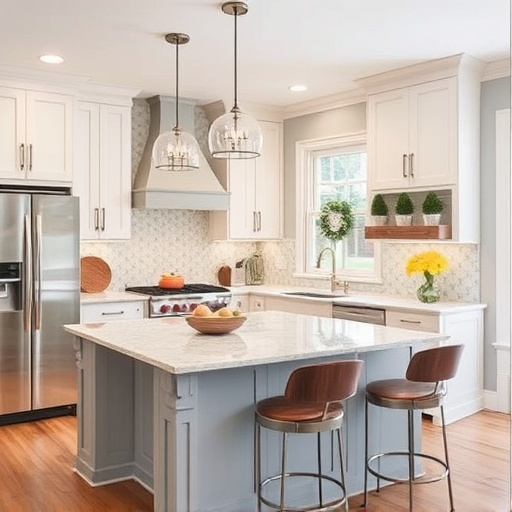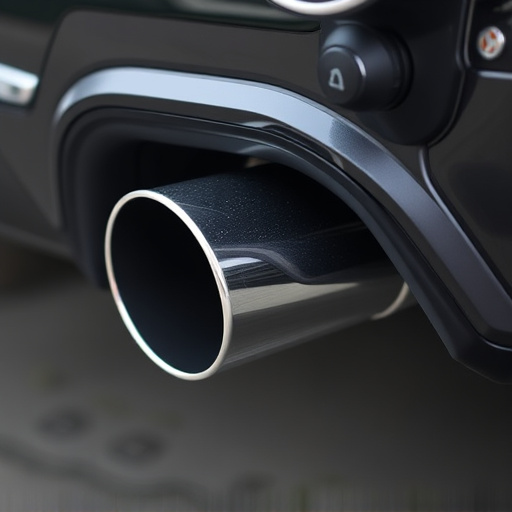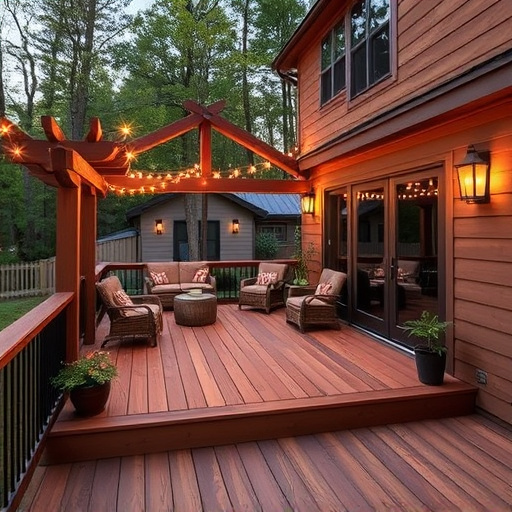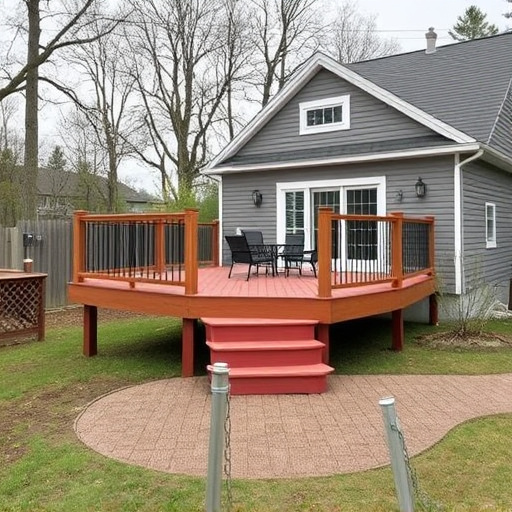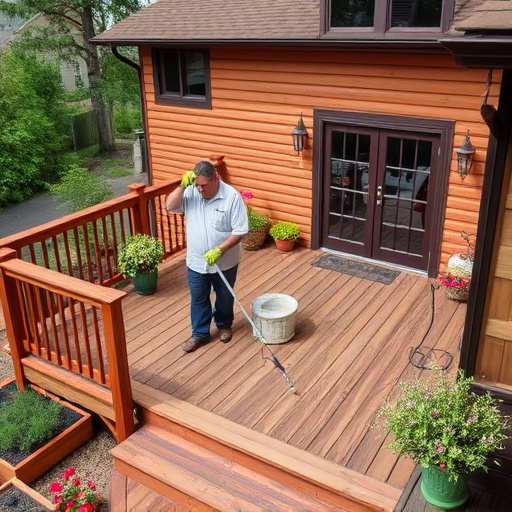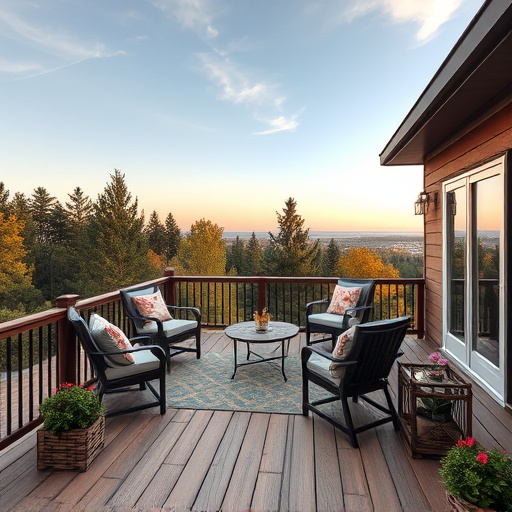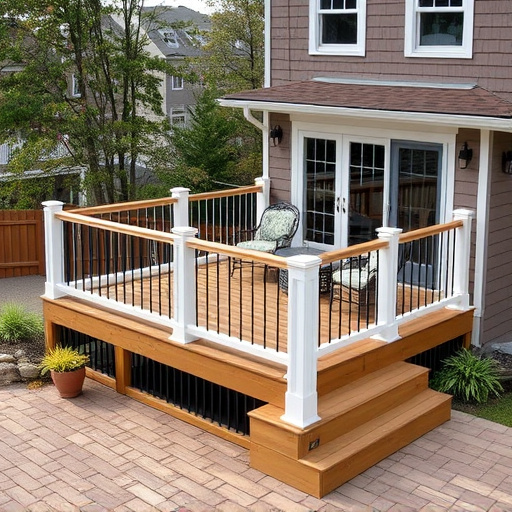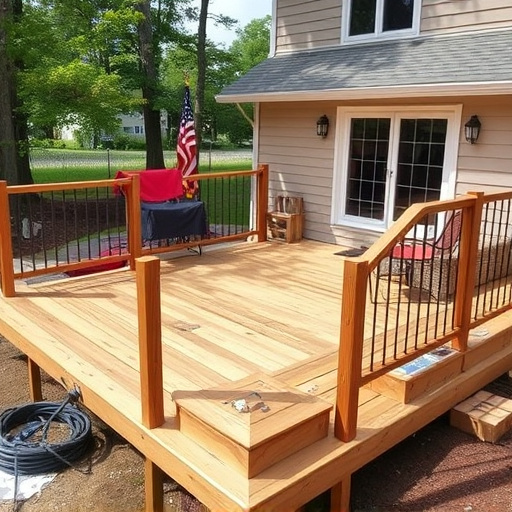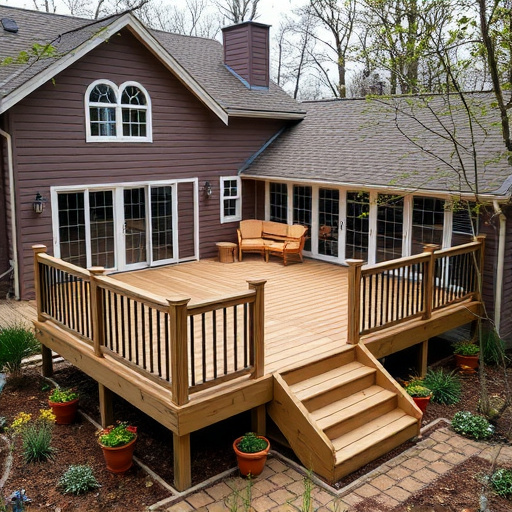Selecting suitable deck materials is key to achieving optimal performance and longevity in various climates. Regional considerations like rainfall, heat, or cold dictate material choices: water-resistant for moist areas, UV-resistant for hot regions, and insulation-focused for colder climates. Hardwood decks are versatile and durable in temperate zones, while extreme weather conditions call for low-maintenance alternatives like composite decking or fiber cement boards. Complementary home exterior services further enhance deck resilience against climate challenges.
When designing or replacing your deck, selecting the right materials is crucial based on your region’s climate. This guide helps navigate the choices, focusing on understanding local weather patterns and their impact. We explore how hardwoods thrive in temperate climates and delve into alternative materials suited for regions with extreme weather conditions. From durability to low-maintenance options, discover the best deck materials aligned with your geographic location.
- Understanding Regional Climate Patterns for Optimal Deck Material Selection
- Hardwood Decks: Suitable for Temperate Climates and Beyond
- Alternative Materials: Exploring Low-Maintenance Options for Extreme Weather Regions
Understanding Regional Climate Patterns for Optimal Deck Material Selection
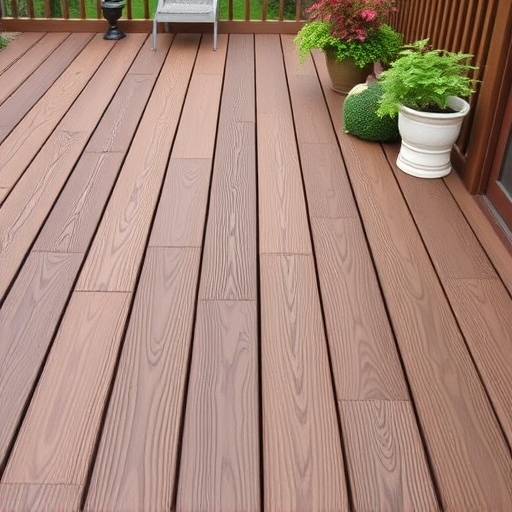
Understanding regional climate patterns is key to choosing the best deck materials for your location. Different climates present unique challenges and opportunities when it comes to outdoor living spaces. For instance, areas with high rainfall or moisture levels require water-resistant and durable deck materials to prevent rot and decay. On the other hand, regions with extreme heat call for materials that can withstand UV exposure without fading or warping.
Knowing your area’s typical weather patterns will guide you in selecting suitable options among various deck materials, from wood to composite and metal. This consideration is crucial not only for the longevity of your deck but also for aligning with the region’s specific needs. For instance, homeowners in coastal areas may prefer low-maintenance composite decks or treated woods, while those in colder climates might opt for materials that offer better insulation properties, ensuring comfort during outdoor gatherings year-round. Moreover, considering exterior home improvements like siding services and roofing services can further enhance your deck’s resistance to regional climate conditions.
Hardwood Decks: Suitable for Temperate Climates and Beyond
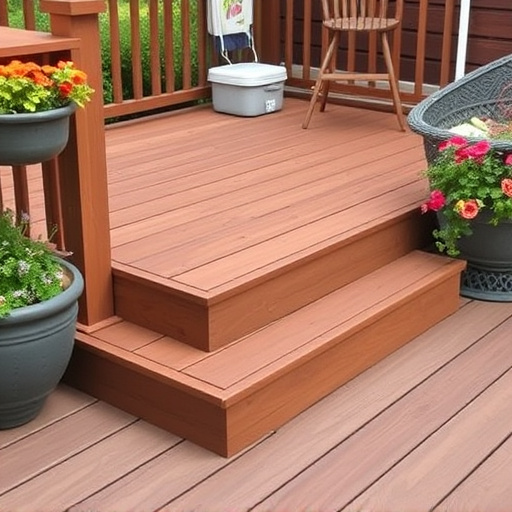
Hardwood decks are a timeless choice for many homeowners, but their versatility extends far beyond traditional aesthetics. In temperate climates, hardwood offers an excellent option due to its natural durability and resistance to decay. This makes it a suitable deck material for regions with moderate weather conditions, ensuring longevity and minimal maintenance over time.
Moreover, the beauty of hardwood decks lies in their ability to adapt to various environments, including areas beyond simple temperates. Professional siding and roofing services often recommend hardwood for its strength against harsher elements like snow, ice, and wind, making it a reliable choice for many home service solutions. Its natural resistance to rot and insects further adds to its appeal, ensuring that these decks remain sturdy and safe for years to come.
Alternative Materials: Exploring Low-Maintenance Options for Extreme Weather Regions
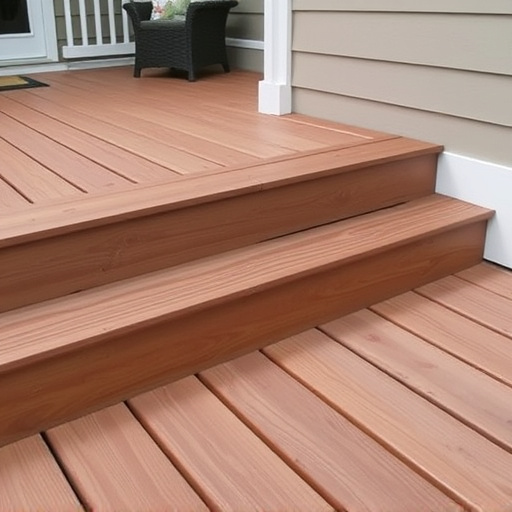
In regions prone to extreme weather conditions, including heavy storms and consistent high temperatures, selecting durable and low-maintenance deck materials is essential for long-lasting outdoor spaces. While traditional wood decks remain popular, they may require more frequent repairs and maintenance due to exposure to moisture and varying climates. As a result, alternative materials are gaining traction among homeowners and contractors in these areas.
One such option is composite decking, which offers excellent resistance to rot, mold, and pests. These materials mimic the look of wood but require less upkeep, making them ideal for regions with high rainfall or prolonged dry spells. Additionally, considering regional climate patterns, some manufacturers create composites specifically tailored for storm-prone areas, ensuring better performance during harsh weather events. For commercial settings experiencing frequent storms and requiring robust siding solutions, fiber cement boards have proven to be a reliable choice, offering both durability and an appealing aesthetic for roofers and contractors specializing in storm damage repair.
When selecting deck materials, aligning them with your region’s climate is key to creating a durable and low-maintenance outdoor space. By understanding temperature ranges, precipitation patterns, and UV exposure, you can choose between traditional hardwoods suitable for temperate climates or explore alternative materials designed to withstand extreme weather conditions. This approach ensures your deck not only looks great but also stands the test of time.





